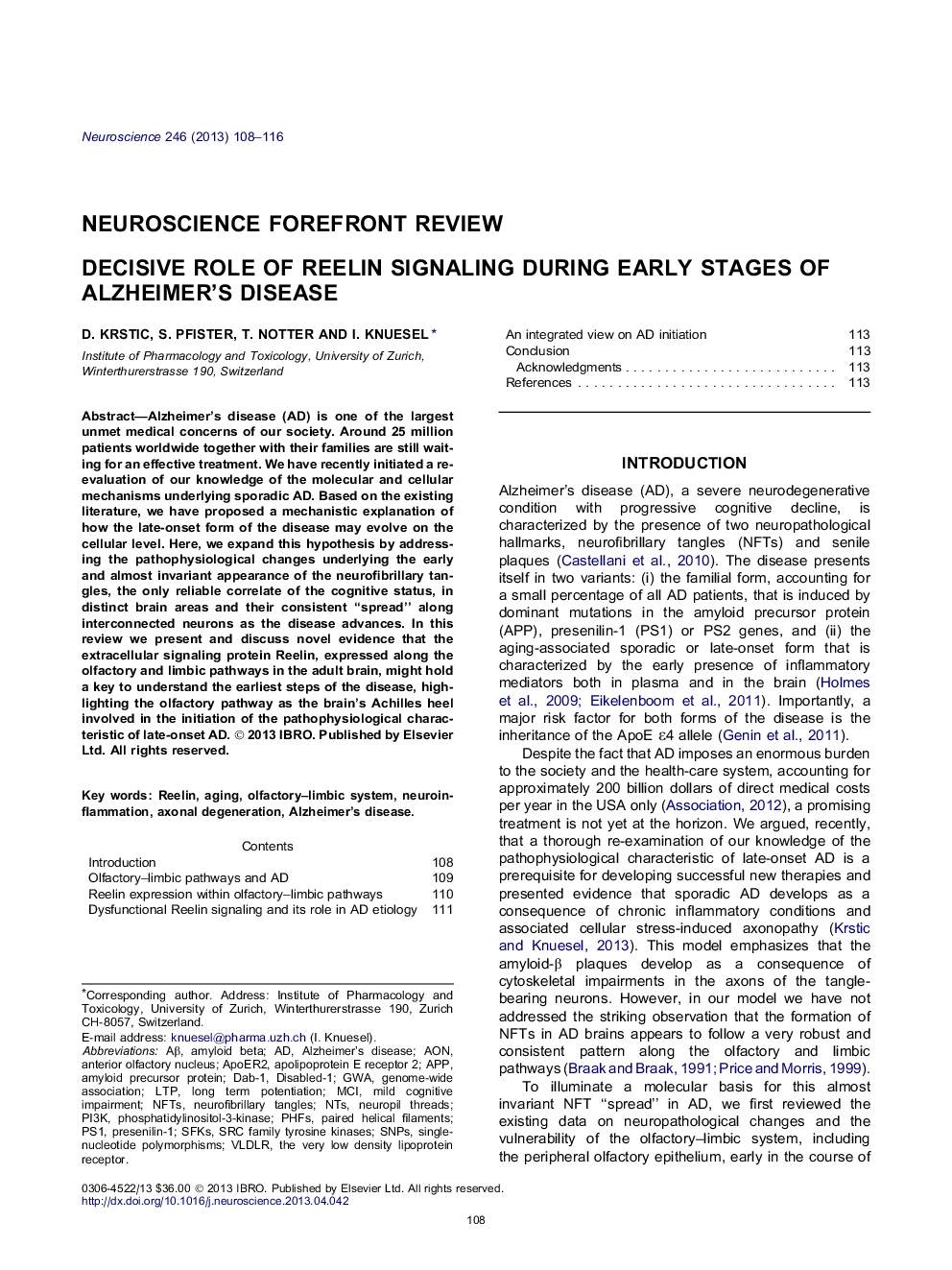| Article ID | Journal | Published Year | Pages | File Type |
|---|---|---|---|---|
| 6274549 | Neuroscience | 2013 | 9 Pages |
Abstract
Alzheimer's disease (AD) is one of the largest unmet medical concerns of our society. Around 25 million patients worldwide together with their families are still waiting for an effective treatment. We have recently initiated a re-evaluation of our knowledge of the molecular and cellular mechanisms underlying sporadic AD. Based on the existing literature, we have proposed a mechanistic explanation of how the late-onset form of the disease may evolve on the cellular level. Here, we expand this hypothesis by addressing the pathophysiological changes underlying the early and almost invariant appearance of the neurofibrillary tangles, the only reliable correlate of the cognitive status, in distinct brain areas and their consistent “spread” along interconnected neurons as the disease advances. In this review we present and discuss novel evidence that the extracellular signaling protein Reelin, expressed along the olfactory and limbic pathways in the adult brain, might hold a key to understand the earliest steps of the disease, highlighting the olfactory pathway as the brain's Achilles heel involved in the initiation of the pathophysiological characteristic of late-onset AD.
Keywords
Src family tyrosine kinasesReelinSFKsPresenilin-1GWANFTsNeuropil threadsNTSPS1ApoER2APPAβSNPsPHFSPI3KVLDLRmild cognitive impairmentNeuroinflammationGenome-wide associationamyloid betaAlzheimer’s diseaselong term potentiationLTPaxonal degenerationPaired helical filamentsAgingDisabled-1phosphatidylinositol-3-kinaseneurofibrillary tanglesanterior olfactory nucleusMCIamyloid precursor proteinSingle-nucleotide polymorphismsApolipoprotein E receptor 2AON
Related Topics
Life Sciences
Neuroscience
Neuroscience (General)
Authors
D. Krstic, S. Pfister, T. Notter, I. Knuesel,
